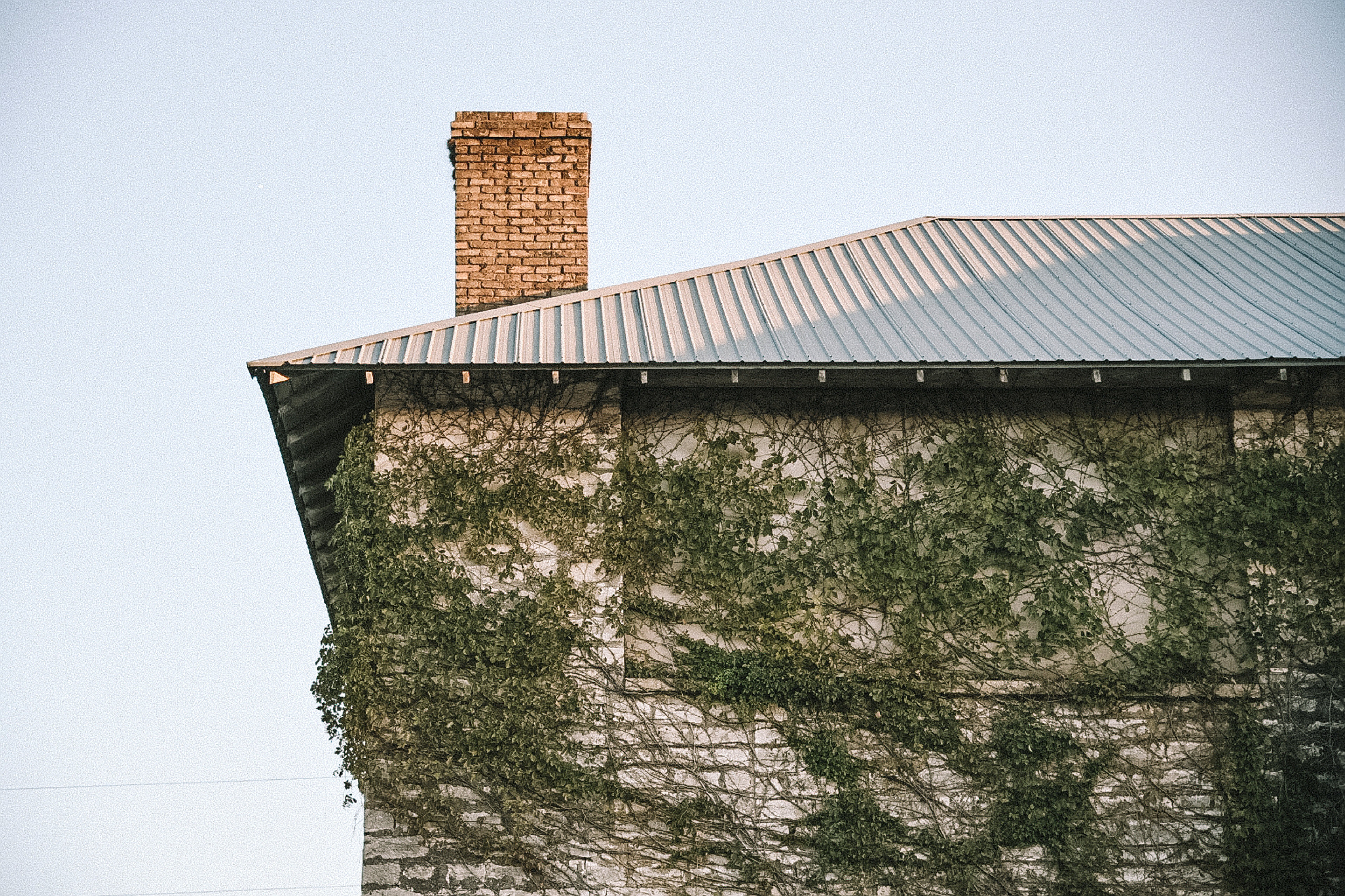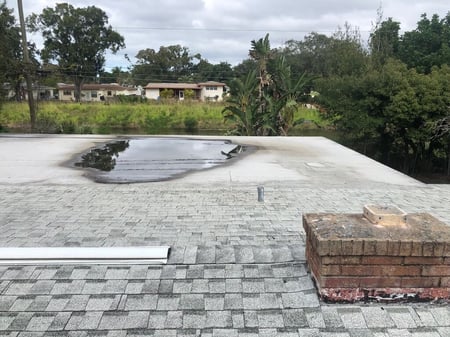Understanding Roof Crickets: Your Roof's Secret Weapon
July , 2024 | 6 min. read

Ever noticed water pooling around your chimney after a heavy rainstorm and wondered why? If so, it might be time to learn about one of the lesser-known yet crucial components of your roofing system: roof crickets!
Whether you live in a sprawling mansion or a cozy one-story house, the principles of good roofing design apply universally, and we could all use a roofing cricket or two! Okay, so, what exactly is it? I’m glad you asked!
We’re the experts here at RoofCrafters, and while we’re expected to know the ins and outs of roofing components and terminologies, homeowners and business owners like you are not, So, let’s delve into the world of roof crickets and discover how these small structures play a big role in protecting your home!
What Exactly is a Roof Cricket?

A roof cricket, also known as a roof saddle, is a small, ridge-like structure installed on the uphill side of a chimney or other roof projections. Its primary function is to divert water around these obstructions, preventing water from pooling and causing leaks.
While it might sound like a simple feature, the roof cricket is a vital component of your roof’s drainage system. Without it, water can accumulate behind chimneys and other protrusions, seeping into your home and causing damage over time.
The name "cricket" might conjure images of chirping insects, but in roofing terms, it's all about water management. Think of it as a mini-roof designed to direct water away from vulnerable spots on your main roof. This helps prevent water from sitting on the roof surface, which can lead to leaks, rot, and even structural damage if left unaddressed.
The Importance of Roof Crickets

So, why are roof crickets so important? The answer lies in their ability to protect your home from water damage. Water is one of the most destructive elements your home faces, and controlling its flow is crucial.
When water pools on your roof, it can lead to a host of problems, including leaks, mold growth, and even structural issues. By directing water away from sensitive areas, roof crickets help to maintain the integrity of your roofing system and extend its lifespan.
In regions with heavy rainfall or snow, the role of a roof cricket becomes even more critical. Snow accumulation can quickly melt and refreeze, creating ice dams that block drainage and force water back under your shingles. A properly installed roof cricket helps prevent this by ensuring that water flows smoothly off your roof, reducing the risk of ice dams and the associated damage.
Types of Roof Crickets: Flat vs. Steep Slope

There are two main types of roof crickets: standard flat roof crickets and steep slope roofing crickets. Each type serves a specific purpose and is used in different roofing scenarios.
Standard flat roof crickets: These crickets are commonly used in flat roofing systems, where water drainage is a significant concern. Flat roofs have a slight pitch to them, but without proper drainage systems, water can still pool on the surface.
Standard flat roof crickets are strategically placed at the roof’s edge and around roof penetrations to channel water away from the building. They are often made of rigid insulation covered with roofing material, such as a membrane or asphalt, ensuring that water flows towards the drains rather than pooling in low spots.
Steep slope crickets: Steep slope crickets are used in areas where water blockage is likely, such as behind chimneys, skylights, or HVAC units. These crickets are usually wooden structures covered with roofing material, like metal, shingles, or synthetic slate.
The design of a steep slope cricket ensures that it blends seamlessly with the roof's overall aesthetic while effectively diverting water. The slope of these crickets can vary depending on the size of the roof penetration and the overall roof pitch. The steeper the slope of the cricket, the more efficiently it can channel water away.
Commercial vs. Residential: Roof Crickets for Every Building

Roof crickets are not just for residential homes; they are equally important for commercial buildings. Commercial roofs, often flat or low-slope, are particularly vulnerable to water pooling and drainage issues. Over time, buildings can shift or settle, altering the roof's slope and creating areas where water can accumulate.
In commercial settings, roof crickets are often used in conjunction with other drainage solutions, such as tapered insulation systems and internal drains, to ensure water is efficiently directed off the roof. This is crucial for maintaining the building's structural integrity and preventing leaks that could disrupt business operations.
For both residential and commercial buildings, the installation of roof crickets should be handled by experienced roofing professionals. Proper installation is key to ensuring that the cricket functions correctly and integrates seamlessly with the roof.
Why Invest in Roof Crickets?

Investing in roof crickets offers several benefits, making them a worthwhile addition to your roofing system:
Prevents water damage: Roof crickets help divert water away from vulnerable areas, preventing leaks and water damage to your home or building.
Extends roof lifespan: By preventing water pooling and the associated risks of rot and mold, roof crickets can extend the lifespan of your roofing system.
Reduces maintenance costs: Proper drainage reduces the need for frequent maintenance and repairs, saving you money in the long run.
Enhances roof aesthetics: Roof crickets can be designed to blend seamlessly with your roof, maintaining its aesthetic appeal.
Compliance with building codes: In some cases, building codes require the installation of roof crickets. Ensuring your roof meets these standards is important for safety and compliance.
Should You Invest in Roof Crickets?
If you're building a new home, undergoing a roof replacement, or simply looking to improve your roof's performance, roof crickets are worth considering. They offer a practical solution for preventing water damage and enhancing your roof's durability.
Whether for a residential home or a commercial building, roof crickets can provide peace of mind, knowing your property is protected from the elements. Okay, but I’m still unsure if my roof needs a cricket.
Go ahead and contact a local roofing contractor for an assessment. At RoofCrafters, our team of experts is ready to help you understand the best options for your roof. Whether it's for your family home or a commercial property, we're here to guide you through the process and ensure your roof remains in top condition. Go ahead and hit that “Schedule an Inspection” button down below!
My name is Cassie, and I’m the Content Manager here at RoofCrafters. I was born and raised in Chicago, Illinois, and made my way out to Florida post-college graduation. I’m incredibly passionate about writing and creating valuable content that helps others with the collaboration of my marketing team. When I’m not working, I enjoy shopping (a little too much), spending time at the beach, and reading!




